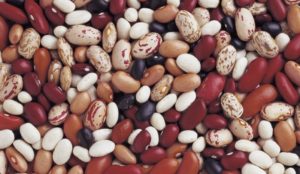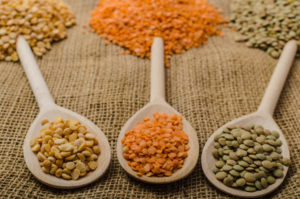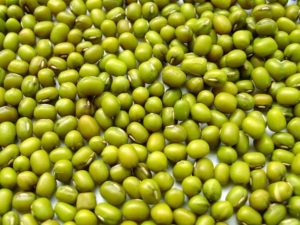Content
- 1 The history of the origin of legumes
- 2 List of legumes
- 3 Useful properties of legumes
- 4 Can legumes be eaten during pregnancy and breastfeeding?
- 5 At what age can legumes be given to a child
- 6 Features of the use of legumes for certain diseases
- 7 Legume consumption rates
- 8 How to cook legumes properly
- 9 Harm of legumes and contraindications to use
- 10 Conclusion
The benefits and harms of legumes are alternately proven by experts, but no one has come to a consensus. However, the popularity of legumes is growing in the wake of the nutrition and fitness craze. On store shelves, there are not only familiar peas and beans, but also unknown chickpeas and mung beans.
What is the secret of the increased popularity and whether beans are really harmful to the body, we will tell in more detail.
The history of the origin of legumes
Legumes as a plant culture have been known since ancient times. It is believed that they appeared in the Mediterranean. Peas have been known since the Stone Age, and lentils were actively used in ancient times.
In Ancient Egypt, Ancient Greece and Ancient Rome, legumes were considered a sacred plant, and therefore were used in religious rituals. Beans have also been found in Egyptian tombs.
This culture was used in ancient Russian cuisine. It is believed that legumes appeared in Russia since the reign of Yaroslav the Wise.
Another legend says that Charlemagne brought them to Europe. The grains were found during archaeological excavations in the countries of the New World.
List of legumes
Legumes are also called pulses. These include more than 20 thousand plant species. They are conventionally divided into 3 groups:
- fruit;
- decorative;
- fodder.
Fruit plants are eaten:
- lentils;
- beans;
- peas;
- soy (soy seeds are called soybeans);
- chickpeas ("chickpeas");
- mung;
- peanut.
Ornamental and forage plants include:
- acacia;
- mimosa;
- alfalfa;
- wisteria;
- goat's rue;
- sweet clover;
- sweet peas, etc.
Useful properties of legumes
Legumes stand out among other products in that they contain a large amount of vegetable protein - about 25% per 100 g. Without them, it is difficult to make a complete, healthy diet. It is not always possible to get the protein needed by the body with the help of meat products! For vegetarians, therefore, beans are irreplaceable.
In addition to protein, beans contain complex carbohydrates, which are healthier than "fast" ones, and also low in fat.
Pulses contain many useful substances that have a beneficial effect on all organ systems.
- Numerous minerals - potassium, magnesium, phosphorus, iron - are responsible for the work of the heart, the condition of the bone tissues of the body, participate in the process of respiration, etc.
- Omega-3 and Omega-6 acids, which benefit many body systems, but only come from outside.
- Antioxidants, indispensable for the prevention of cardiovascular and even cancer. They also have the ability to slow down aging.
- Vitamins A and B benefit the nervous system and are essential for healthy hair.
- For women, the benefits of legumes are great due to the content of folic acid, which is necessary for the reproductive health of women.
- Fiber, the main property of which is to improve bowel function.
Peas
One of the most nutritious cereals.It is hypoallergenic, so eating peas will not harm those with food allergies.
Peas are high in potassium, which is beneficial for the cardiovascular system.

Beans
Beans - the leader in the content of antioxidants among beans. It contains a lot of fiber, potassium, vitamin K and carotene, thanks to which the beneficial properties of food are increased. Due to the content of ascorbic acid, beans are able to strengthen the immune system with regular use.

Lentils
Lentils contain the most protein - up to 35%, with a low content of fats and carbohydrates.
Besides the listed minerals, there is manganese and copper. A serving of lentils contains the daily requirement of iron: the product is useful for anemia.
Lentils are red, brown, green. Depending on the type, the taste changes, the time required for its preparation, but not the useful properties.

Soya beans
Soybeans contain a lot of protein, which is similar in structure to the animal. Therefore, soy is an essential ingredient in the diet of vegetarians. Milk and meat products are made from it.
Soy contains vitamins K, E, D. Its regular intake is useful for the prevention of diabetes, atherosclerosis.

Chickpea
Chickpeas are used in vegetarian recipes, Indian recipes. However, it is rarely found on grocery store shelves, since not everyone has yet appreciated its beneficial properties.
Chickpeas contain zinc, iron, magnesium, manganese. Calcium and phosphorus in the composition strengthens bone tissue. Contains an essential amino acid - lysine - which helps to absorb calcium, and its absence reduces the overall performance of the body.

Mash
Mash is a green cereal with a nutty flavor. It is distinguished by a number of properties unusual for beans. First, it doesn't cause bloating. Secondly, it cooks relatively quickly - 45-50 minutes.

The benefits of legumes for weight loss
Beans cannot be called a dietary product, but without them it is impossible to imagine a balanced, healthy diet.
Pulses make it easy to get your daily protein intake. But at the same time, one must remember about the large amount of carbohydrates, the excessive use of which will only harm those who are losing weight. It is best to add them to the diet at lunchtime or during an early dinner, as they are absorbed before 4 hours.
Can legumes be eaten during pregnancy and breastfeeding?
During pregnancy, beans are not only okay but also necessary, as they provide numerous nutrients that benefit the developing fetus. You can eat in the usual amount that a woman used before pregnancy: there will be no harm.
After the birth of a baby with breastfeeding, legumes are gradually introduced into the diet, observing his reaction. Some mums report that beans cause colic and bloating in their baby. At the same time, a large group of women does not at all note the connection between eating legumes and the condition of the child.
At what age can legumes be given to a child
Despite the beneficial properties of legumes, it is not possible to feed your child right away. The introduction of the product into the children's diet occurs gradually so as not to harm the child's body. It is conventionally divided into 3 stages. Before each one, you need to consult with a pediatrician who will tell you if the baby is ready for new products.
- From 8 - 9 months, grated green beans and green peas can be given by adding to mashed potatoes or soups.
- After 2 years, you can add mature beans: in small quantities and grated. Add to the weekly menu no more than 2 times.
- Servings of whole foods made from legumes, not just mashed potatoes, can be given from age 3. This age allows the use of canned legumes. The portion should be no more than 100 g. Then the beans will benefit the child.
Features of the use of legumes for certain diseases
Doubts about the benefits of legumes for the human body are caused by the fact that they cause heaviness in the body, and in some diseases, their use is prohibited, since they can cause harm to health. Almost all products have such restrictions.
With gastritis
With an exacerbation of gastritis, legumes are recommended to be completely excluded from the diet in any form.
The diet for gastritis depends on the type of disease, depending on the decreased or increased secretory activity. In the first case, legumes cannot be even if the condition improves. In the second case, some sources allow the use of small amounts of beans. In any case, you should contact your doctor for advice.
With pancreatitis
An exacerbation of pancreatitis is relieved by hunger for 3 to 4 days. Therefore, there is no need to talk about the use of any products. Then the patient is assigned a strict diet, during which the use of legumes is also strictly prohibited.
When a stable remission occurs, they are allowed to eat peas and green beans in the form of soups, mashed potatoes. Not all experts agree with such a relaxation of nutrition. In order to avoid possible harm, it is better to consult a doctor first.
With diabetes mellitus
The beneficial effect of legumes in diabetes mellitus has been proven: they have a low glycemic index, so they are easy to eat and even recommend to use for this disease. A study was conducted that confirmed the benefits of legumes: with regular use, blood sugar levels normalize.
With gout
You shouldn't eat legumes for gout. Even one serving can exacerbate the disease.
The prohibition is associated with the essence of the disease - a violation of protein metabolism, due to which uric acid is not excreted from the body and is deposited in the joints: legumes contain many purines, as a result of the breakdown of which it is formed.
Legume consumption rates
Despite the large number of useful properties of legumes, they should be consumed in moderation. The numbers vary depending on the source. One of the institutes of nutrition has established that you need to eat 15 - 20 kg of legumes per year.
Other sources say that 10% of all foods consumed is the norm.
A more average and convenient recommendation is to add them to the diet 2-3 times a week in small to medium sized portions.
How to cook legumes properly
Green beans and green peas can be eaten raw. For other products, heat treatment is required.
The question of the benefits and harms of legumes for the body completely disappears if they are properly cooked. At the same time, all useful properties are preserved. Leguminous crops are pre-soaked before cooking. They do it in 2 ways:
- Poured over with cold water and kept for several hours.
- Boil for several minutes, then drain the water, and only after that they begin to cook.
Water is taken in a ratio of 1 to 3: for 100 g of cereal, 300 ml of water.

Tips on how much cereal to keep in cold water vary. Some say that 20-30 minutes is enough, others recommend leaving the soaked cereal overnight.
Thanks to the pre-soaking, the groats cook faster. The procedure allows you to reduce unpleasant consequences - bloating and flatulence, and the benefits of the dish only increase.
Many complain of heaviness in the stomach. You can avoid it in the following way:
- Brew longer and cook cereals longer.
- Do not use a pressure cooker.
- Do not consume a large amount at once, increase the portion gradually.
- Do not eat with bread and potatoes, meat and sausage: these foods will only increase the load on the stomach.
Harm of legumes and contraindications to use
The damage to legumes is minimized when properly prepared and consumed in moderation. So the controversy and disagreements about the benefits and harms of legumes for human health are largely far-fetched. Just like any other product, legumes have specific properties:
- Restrictions in use for problems with the gastrointestinal tract, when special care is required in nutrition. The above are the diseases in which the use of legumes is strictly regulated so as not to harm health. Therefore, it is better to consult with your attending physician who is aware of the course of a particular disease.
- They are considered heavy food, especially for the elderly, whose body does not always fulfill its functions 100%. This has caused talk about the dangers of the product.
- Common unpleasant properties of legumes are such consequences as bloating, gas formation, flatulence. To avoid harm, it is necessary to gradually introduce pulses into the diet, observing how you feel. Stop at a serving size that doesn't bother you.
- Legumes take a long time to digest, so they should not be consumed before bed to help you feel good.
Conclusion
The benefits and harms of legumes are regulated by moderate consumption and proper preparation: if all the rules are followed, the beans will only benefit the body due to the content of minerals, vitamins and other useful substances. In order not to face negative consequences after eating, you should not add legumes to it if there are contraindications for health.

